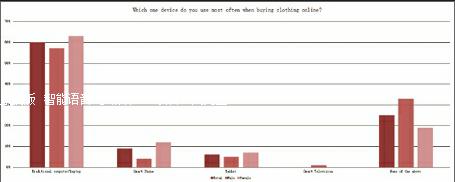Potential boon from the shoppable side of social media
by+ZHENG+Ran


If it seems like people spend a lot of time on Facebook, Instagram, and Twitter, its because they do - to the tune of nearly two hours every day. Now, brands and retailers will are tapping into the power of social media with in-network buy buttons. And the apparel industry stands to greatly benefit from it.
“I think it will be huge for digital commerce just because social has just become more a part of everyday life,”says Jeremy Sherman, vice president, Customer Magnetism, a Virginia Beach, VA-based digital marketing agency.“People are looking to make purchasing as easy as possible. Now, Facebook already has all your information and you could probably keep a credit card on file. This will be almost like Amazon was a few years ago, which was the place peo- ple would go to buy because of the ease of purchase. There are so many small businesses; these big guys will streamline the process for the smaller user. And level playing field between big and small brands and retailers.”
Currently, the average person spends 28 percent of their online time on social media, according to GlobalWebIndex, or about 1.72 hours a day. Apparel sellers and the social networks are now looking to capitalize on that with shoppable buttons that keep the user within the app.
Pinterest and Twitter have already are offering buy buttons. Facebook started testing its buy now feature on ads in its newsfeed last year. Now its rolling out shoppable buttons on its dedicated Pages stores. Instagram will soon be launching its own buy buttons, so shoppers can buy within the app. Currently, Instagram offers a “liketoknowit” button on various photos that allows users to click on it and then receive an email with ready-to-shop product details. Google just launched a buy button on its ads.
Retailers and brands should expect a seismic shift to mobile shopping once the social networks fully launch their buy now capabilities. It will be a big change from where things stand now: 60 percent of consumers mostly use a deskor laptop when buying apparel online, according to the Cotton Incorporated Lifestyle Monitor? Survey. Smartphones (9 percent) and tablets (6 per- cent) follow. However, 1 in 2 consumers say they browse for clothing online using their smartphones. Among these mobile browsers, 2 in 3 do so at home, about a quarter (26 percent) do so when stuck somewhere; and about a fifth (21 percent) do so right before they purchase something in-store.
But the combined power of social and mobile cannot be ignored when it comes to digital commerce. Globally, 2.03 billion people have active social media accounts, according to Go-Globe statistics. And the majority of Americans says they use their smartphones for social networking (75 percent), according to the Pew Research Center. Facebook reports that 526 million of its users access its site solely through mobile. Among Twitter users, the network says 80 percent of its active users are on mobile devices.
In the U.S., 64 percent of adults own a smartphone, a figure that jumps to 85 percent among 18-to-29 year olds, followed by 79 percent of 30-to-49 year olds and 54 percent of those ages 50-to-64, according to the Pew Research Center.
And already, social media is influential when it comes to shopping. Currently, 9 percent of overall shoppers and 17 percent of those ages 13-to-24 say seeing or reading something on social media from a retailer or brand about new styles or sales encourages them to browse for new apparel, according to the Monitor? data.
John Lincoln, president of the San Diego-based social media marketing firm, Ignite Visibility, and a digital marketing teacher at University of California San Diego, says more and more compa- nies are having a “mobile first” strategy.
“Every social media platform is looking to create very simple point of sale processes for mobile users,” Lincoln states. “And thats going to be one of the biggest ways for these sites to grow. Everything is going mobile now and companies are thinking mobile users before desktop. As far as mobile and social and ecommerce, it ties into distributed commerce, meaning moving into the future you can sell from any platform to any device with multiple areas to distribute your ecommerce sales. In the last quarter, mobile grew significantly and its absolutely going to be the biggest thing for people to pay attention to.”
Digital analytics firm comScore recently reported mobile commerce sales increased to 15.4 percent of total digital commerce sales in Q1 2014, from 11.1 percent in the year ago period.
Apparel retailers can now consider how social commerce can further grow businesses. For instance, 43 percent of shoppers would like apparel retailers and brands to share coupons and promotional information, as well as provide exclusive deals to loyal followers on social media sites (41 percent), according to the Monitor? survey.
Women are significantly more likely than men to say they want promo information (51 percent versus 31 percent) and exclusive deals for followers (47 percent versus 30 percent). Women are also more inclined than men to want tips on what to wear (32 percent versus 21 percent) and curated pictures from stylists that provide customized style tips (17 percent versus 7 percent).
“I think theres going to be special marketing strategies created just for social ecommerce - and major retailers could be doing 10-to-30 percent of their online revenue through social channels, if they set it up correctly,” Lincoln says.“Facebook now has the largest display advertising in world. With that ability and these new POS abilities inside of the platform, the traffic is there, the opportunity is there and with new ad mediums, it will affect the bottom lines more.”
And Sherman says retailers should be able to incorporate a social commerce platform into their business model relatively easily.
“The social networks will take care of the heavy lifting as far as integration,” he says. “It adds more for the digital teams to manage, optimize, and build strategy around. But at the end of the day, it will drive more business for these retailers and I think it will be big.”
- China Textile的其它文章
- Importance of truly connecting with“Need to Know”millennials
- Everyday business casual actually means comfort
- Consumers call for better linens
- Apparel Sourcing Paris welcomed more than 100 Newcomers
- Largest Yarn Expo Autumn jumps 70% in scale
- Intertextile Shanghai Home Textiles sets new records

